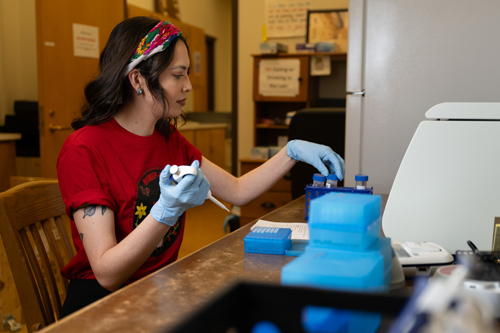As more women live with breast cancer, minimization of significant deformity in the breast after breast preservation is increasingly gaining attention. Oncoplastic surgery merges cancer (onco-) and cosmesis (-plastic), incorporating the principles of cancer surgery with attention to cosmetic outcome. Many breast surgeons have trained in these techniques and at times, work closely with plastic surgeons to provide this important level of care.
The decision-making regarding the selection of patients for oncoplastic techniques include many factors, such as tumor size, tumor location, breast size and shape, the density of glandular tissue, the presence of other chronic illness, smoking, need for additional cancer treatment, and patient preference. Oncoplastic surgical techniques involve careful planning of skin and breast tissue removal, and incorporate many different approaches. For some, it may be as simple as thoughtful incision placement – around the nipple, in the armpit area, under the breast – to both improve appearance and decrease lumpectomy defects.
For others, the approach may involve tissue mobilization – taking the remaining breast tissue and moving it to fill the defect caused by removal of the cancer. This technique could have implications on the delivery of radiation therapy, although further study on oncologic safety are needed. Although this approach adds complexity, for patients strongly motivated to avoid mastectomy, it can make a remarkable difference in their satisfaction and quality of life.
And for other patients, a more complex approach may be appropriate involving reshaping the entire breast gland after removing a large amount of breast tissue (volume) and repositioning the nipple. This may be accompanied by more advanced techniques such as replacing breast volume with tissue from other parts of the body and even operating on the non-affected breast with a reduction procedure to achieve the same look on both sides. Tools like these have expanded the criteria for breast conservation, allowing breast preservation in situations previously thought to require full breast removal, such as for patients with bigger tumors or with multiple breast cancers, and still achieve an acceptable cosmetic outcome.
In my practice, I believe every breast cancer removed through surgery requires attention to cosmetic outcome. Nevertheless, some of these techniques are not appropriate for every patient, and it takes careful surgical planning with your oncology team to help tailor your approach. At Rutgers Cancer Institute of New Jersey, we are fortunate to have experience in various oncoplastic techniques for lumpectomy and work closely with other surgical oncologists and plastic surgeons at RWJBarnabas Health at times to achieve desirable results.
With improvements in breast cancer treatment, survivors look forward to a long, healthy life. With that, it is more important than ever to offer surgical treatment options that can preserve their quality of life and their sense of well-being.
Shicha Kumar, MD, FACS, is a surgical oncologist in the Stacy Goldstein Breast Cancer Center at Rutgers Cancer Institute of New Jersey, which delivers integrated cancer care in partnership with RWJBarnabas Health. Dr. Kumar is also an assistant professor of surgery at Rutgers Robert Wood Johnson Medical School.
###
Original post https://alertarticles.info



